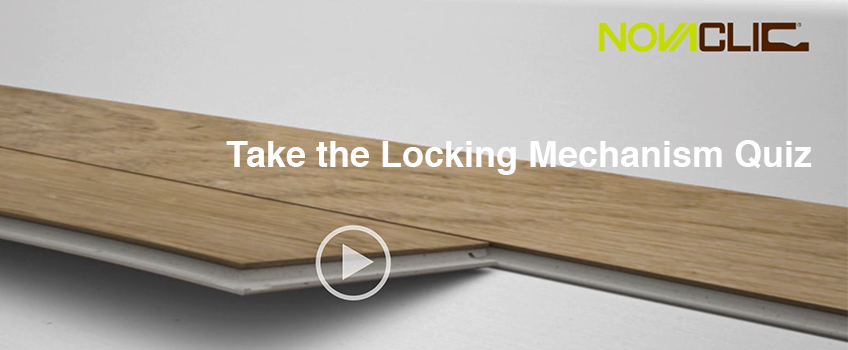How much do you know about the locking mechanism used on floating luxury vinyl flooring? Here are 10 statements to test your knowledge of this ingenious technology that makes a luxury vinyl floor really come together! Answer True or False to each statement and discover the correct answer below.
- T or F: A “locking mechanism” is the industry term for the tongue and groove system that is used to fasten floating LVF together.
- T or F: The first patent for a locking mechanism was created and filed in 2008 and the first licensee was signed in 2010.
- T or F: The requirements for an LVF plank or tile to be able to incorporate a locking mechanism have nothing to do with thickness.
- T or F: There are several different kinds of locking systems.
- T or F: Locking systems are protected by patents.
- T or F: The locking system is molded into the vinyl.
- T or F: Locking systems are very good.
- T or F: Direct glue installations are stronger than locking mechanisms.
- T or F: Moisture seepage is a big concern with locking mechanisms.
- T or F: Novalis uses several types of locking mechanisms.
Answers:
- True. They are also called “clic systems.”
- True. And in fact Novalis started our production in 2010.
- False. It’s really a function of two things- the type of locking mechanism and the thickness of the product. The type of locking mechanism can determine the thickness too, such as the Valinge 5G which needs the LVF to be a minimum of 4mm thick.
- True. The two major providers of them are Unilin® and Valinge®. The Unilin angle/angle, Valinge 2G, and Valinge 5G are the most widely used, while we additionally use the Valinge XXX drop-lock system.
- True. Companies like Unilin and Valinge develop the locking mechanisms and then patent the designs. Novalis then applies for a license to use the mechanism on our products. Any LVF manufacturer who is using a licensed locking mechanism will display a hologram sticker on the product’s package.
- False. The locking mechanism is actually cut into the plank or tile. The machinery utilizes anywhere from 4-8 different cutter heads to carve the profile in the LVF. They are set up in a multi-stage system and the LVF is run through the machine at a high rate of speed through 2 separate machines, one to cut the long side and another to cut the short side.
- True. The patented locking mechanisms are very good and are the same used in other types of floating flooring like laminates and engineered wood flooring. One thing to keep in mind though is that LVF is a soft material, so it’s easy to damage the locking mechanism if the flooring is not properly acclimated or installed according the manufacturer’s installation instructions.
- True. There’s really no comparison to direct glue installations as far as strength since the method is very different. The locking mechanisms can be pulled apart with very little force, which is why it’s critical to maintain perimeter spacing and be sure not to install anything through a floating floor like moldings and cabinets.
- False. We would not be concerned with moisture seepage from the top of a floating LVF. The locking mechanism is tight enough to only allow a slight amount of moisture vapor to penetrate it and at a very slow rate. We’ve run time tests with puddles of water on our locking mechanisms with no water seepage in 48 hours. I think a greater worry is a large spill getting under the floor from the edges as we covered in the blog on Water.
- True. Novalis uses an angle-type mechanism from Unilin on most of the long sides of our products and on some short ends. We also use the angle-type Valinge 2G, the drop-lock type Valinge 2 and 5G, and a new drop-lock type called Triple-lock. Our Lyndon, Casa and Abberly collections in the NovaFloor® and STYL and DSGN in the AVA® collections contain floating products.
To see Novalis locking mechanisms in action, watch the videos in the Tech Info section of NovaFloor.us.
Thank you Jim Kups, North America Technical Manager for Novalis, for teaching us a thing or two about locking mechanisms!


